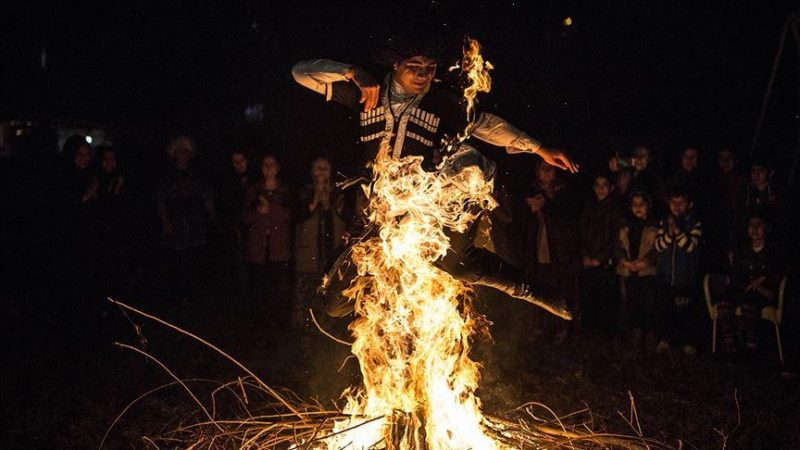ANKARA
People across the Turkic speaking nations shared with Anadolu Agency their customs and traditions of celebrating Nowruz, a spring festival which has been celebrated for more than 18 centuries across Anatolia and Asia.
The traditional festival is celebrated by various ethno-linguistic groups mainly in Iran, Afghanistan, India, Central Asia, the Caucasus, Albania, and Macedonia and falls on or around March 21. However, many nations keep celebrating the holiday for up to 10 days.
In 2009, Nowruz was inscribed by UNESCO on the Representative List of the Intangible Culture Heritage of Humanity.
Nature’s four elements
Sevinj Akhmedova, 33, from Azerbaijan said Nowruz is celebrated with great vigor in her country.
“The festivities begin four weeks prior to the day of Nowruz. During the month leading up to Nowruz, every Tuesday is devoted to celebrating nature’s four elements consecutively: water, fire, earth, and air or wind,” she said.
Akhmedova said they usually celebrate Nowruz with family members.
Every sweets baked for Nowruz has a symbolic meaning, she said, adding that rhomboid-shaped national Baklava represents the four parts of the world, Gogal represents the sun, and Shekerbura the moon.
Jasur Mamed, a 24-year-old student of Ahiska Turks from Azerbaijan, said in the region where he was born and raised, Ahiska Turks and Azerbaijanis have been living together for more than half a century and thus both sides have adopted this union so closely that it is almost impossible to understand which customs belong to Ahiska Turks and which belong to Azerbaijanis.
During the festivities of Nowruz, which Mamed said is a family holiday, various traditional games and comic shows such as Kos-kosa are performed, where symbolic characters of Nowruz — Kechal (bald-headed), who represents the spring, and Kosa, who represents the winter — attract people’s attention.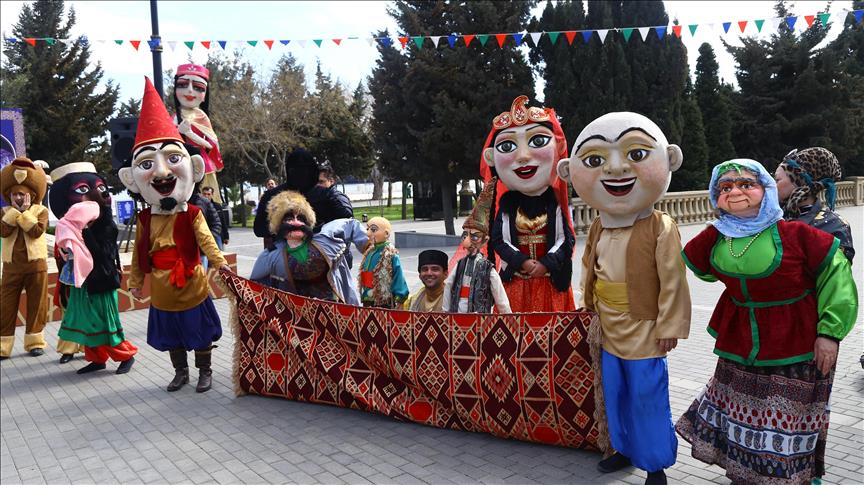
Mamed also underlined that this year due to the COVID-19 pandemic, public celebrations have been restricted, adding that to honor the martyrs of the recent Karabakh war, the celebrations were also suspended.
Jasurbek Saparbayev, 25, from Turkmenistan, said March 21-22 is celebrated as the National Spring Festival and is an official public holiday in his country.
For people of Turkmenistan, Nowruz reminds them of the revival of nature, peace and harmony between people, the representation of good neighborliness and friendly relations, and heralds spring’s arrival, he said.
Various cultural events, festivals, folklore-ethnographic shows and concerts are held all over the country during the festivities, said Saparbayev.
Sounds of karnay
Aiymbubu Keneshbekova, 22, from Kyrgyzstan said her countrymen mark Nowruz, which coincides with the vernal, or spring equinox, on March 21 as the beginning of a new year.
The day of Nowruz begins with the sounds of the karnay — a traditional long wind musical instrument — while a table covered with a white tablecloth is crowded with national Kyrgyz dishes, she said.
Sumolok — also known as Samani, or Sumalak in various Turkic states — a sweet paste made entirely of germinated wheat and prepared for nearly 24 hours in a large pot, is an “obligatory attribute” of the festive meal, said Keneshbekova.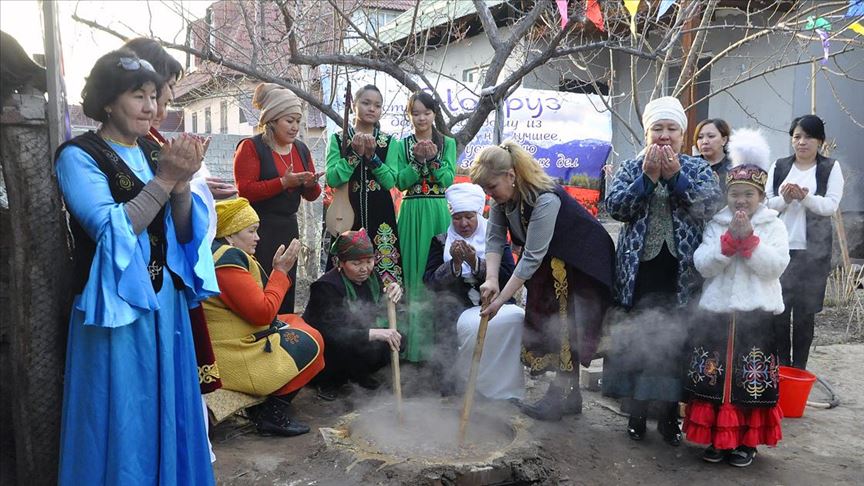
“Small stones are also being added into the paste so that the Sumolok does not get burned while being prepared for such a long time. It is believed that if you find one of these stones in your cup of Sumolok, you can make a wish, and it will definitely come true.”
Keneshbekova went on saying that Sumolok takes a long time to prepare, so women, in order to pass the time and fill the atmosphere of cooking with positive energy, accompany the whole process with songs, dances and poems.
In Kyrgyzstan, boys born on March 21 are usually named Nooruzbek or Nooruzbay, and girls — Nooruzgul, she said.
In the days before Nowruz, she said, it is customary to tidy up your house, pay debts and ask for forgiveness from those whom you once offended.
The whole holiday is accompanied by national games, including archery competitions, horse races, team competitions in Kok-boru — a traditional horse game — and dancing.
Aisulu Tynyshova, also from Kyrgyzstan, said in every village of her home country, they have small communities consisting of dozens of families from the same tribe which usually collect money and buy sweets, fry Boortsog — a small square shaped fresh dough — cook special soup and organize a “splendid celebration.”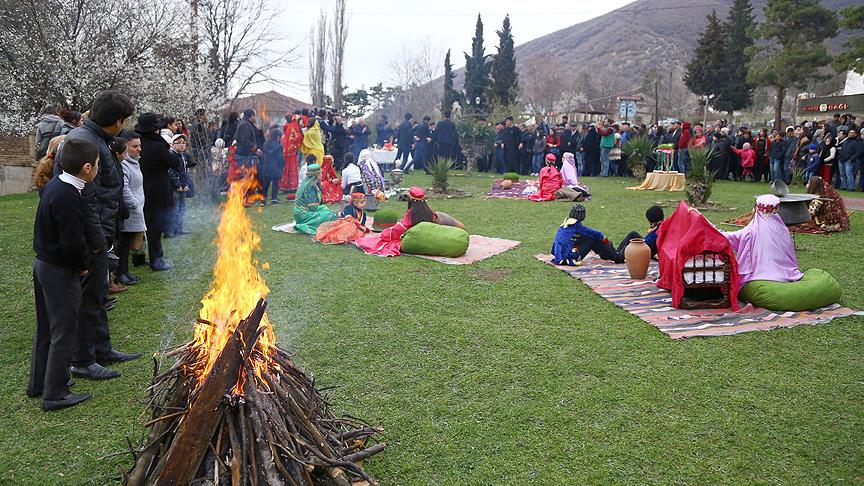
Tynyshova recalled that her nation used to cook Sumolok when she was a kid, adding that nowadays, “it’s a rare thing” as “people switched to mass production and selling it on streets.”
She added that usually many other tribes in the villages cook Beshbarmak — the national dish among nomadic nations in Central Asia — for Nowruz.
Conveying traditions to young generations
Zebiniso Kamalova, 37, from Uzbekistan said that Nowruz literally means “new day,” adding that this year’s Nowruz marks the first day of the new solar Hijri calendar year of 1400.
She underlined that the arrival of spring, the pullback of the frosty days, and the awakening of nature are celebrated with enthusiasm in Uzbekistan.
“On the occasion of the long-awaited Nowruz festival every year, the people in villages, towns and cities come together, organize festival ceremonies, sing songs, dance and have fun. The festive atmosphere does not leave the whole country for 10 days.”
Kamalova, who is also an international researcher at Istanbul Commerce University, said that Ulak-kupkari — one of the most ancient equestrian games — is among the main attributes of the festivities.
She said that the majority wear their national clothes, visit friends and relatives and participate in events held in yards, gardens and markets that continue for several days.
“In my opinion, Uzbeks do not have any other festival that is celebrated with the same enthusiasm and joy at the state level and by the people as Nowruz,” she added.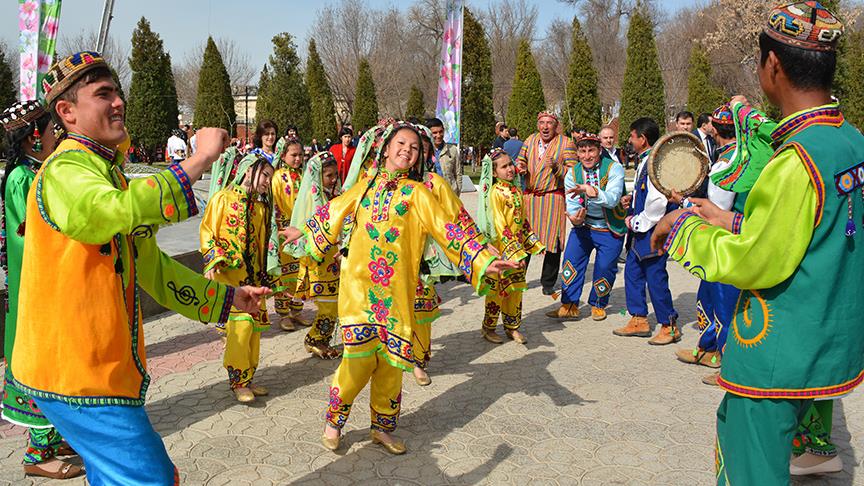
Kamalova emphasized that besides traditional Sumalak, Uzbek Plov — an authentic rice and lamb dish — is also being cooked in the holiday.
“We try to keep the festive atmosphere by conveying our traditions and customs that we have learned from our mothers and fathers to our children,” she concluded.
Traditional games, sports activities
Fayzulla Toltay, 24, from Kazakhstan said that the Nowruz feast is celebrated “on a very high level” in his country.
Up to 200 traditional tents are set up in the squares every year to mark the festivities, he said.
Toltay said that traditional games and sports activities such as Altybakan, a swing of 3-4 meters (9-10 feet) customarily used by two people, usually a girl and a boy, Kazakh wrestling and Aitysh, a contest centered on improvised oral poetry recited to the accompaniment of traditional musical instruments, are practiced and played during the festivities.

